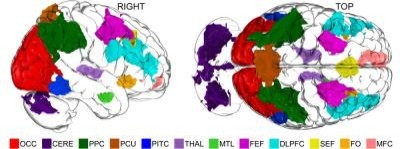Imagination Discovered In Human Brain, Researchers Locate ‘Mental Workspace’ [PHOTOS]

Where does the human imagination come from?
In a recent study, scientists answered this question and discovered where the brain’s “mental workspace" – a neural network that manipulates images, symbols and other mental constructs – is located.
"Our findings move us closer to understanding how the organization of our brains sets us apart from other species and provides such a rich internal playground for us to think freely and creatively," lead author Alex Schlegel, a researcher at the Dartmouth College Department of Psychological and Brain Sciences, said in a statement. "Understanding these differences will give us insight into where human creativity comes from and possibly allow us to recreate those same creative processes in machines."
Scientists observed 15 participants who were asked to imagine abstract visual shapes and combine them into complex figures or to dismantle them into separate parts. Using a functional MRI to measure their brain activity, researchers found “a cortical and subcortical network” in 11 parts of the brain responsible for imagery manipulations.
"Our lab is very interested in the kind of flexible cognitive behaviors that humans have," Schlegel told Popular Science. "We can learn new things, we can think of new concepts, seeing things from different perspectives -- a lot of this has to do with a very rich mental space, kind of a mental playground."
Unlike other studies that looked at different parts of the brain in isolation, the new Dartmouth study demonstrated how it’s not just the “right brain” that is responsible for creative thought. Rather, the human brain is interconnected.
"There's a lot of debate about what makes some people more creative than others," Schlegel told the Huffington Post. "That is one possibility, that we tap into this network more or better than others -- maybe there are stronger connections between these areas of the brain."
Initially, scientists thought the visual cortex would be the only region associated with the human imagination, but instead they found several regions involved in manipulating shapes.
"We saw differences in activity all over the brain when we compared to control conditions," Schlegel said. "It does seem rather than being a single area responsible for imagining or manipulating, it seems like lots of areas have to work in concert."
While this study is the first to define the “mental workspace,” it shouldn’t be the last, scientists say. "What we’re starting to show is that eventually, when we start to get to these complex cognitive behaviors, we need to start looking away from isolated areas," Schlegel said, "but rather how the brain acts as a whole."
© Copyright IBTimes 2025. All rights reserved.






















